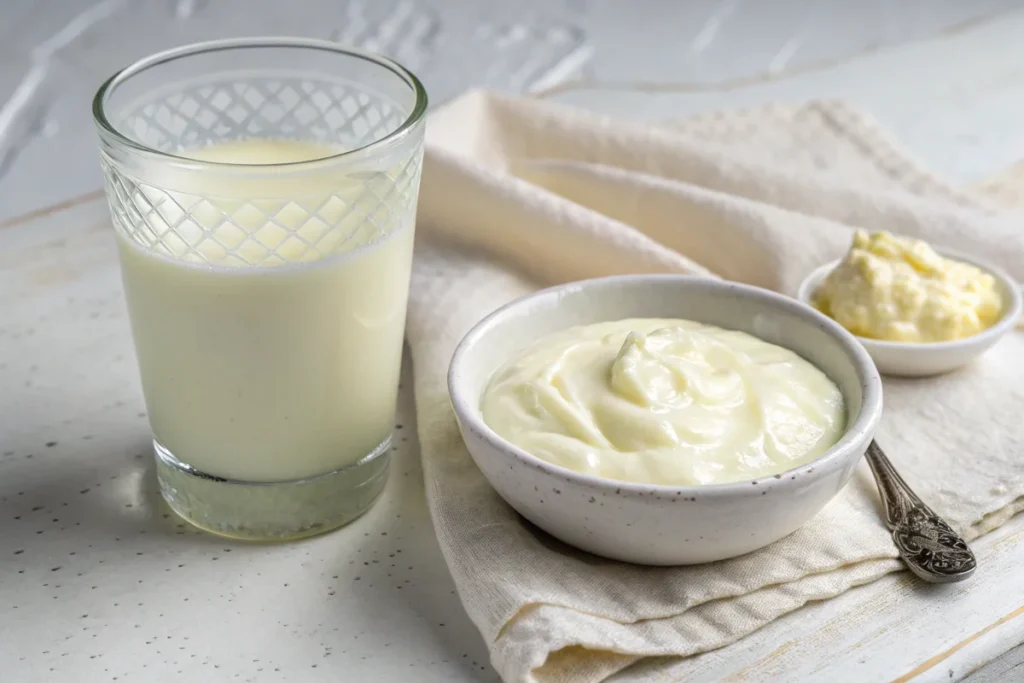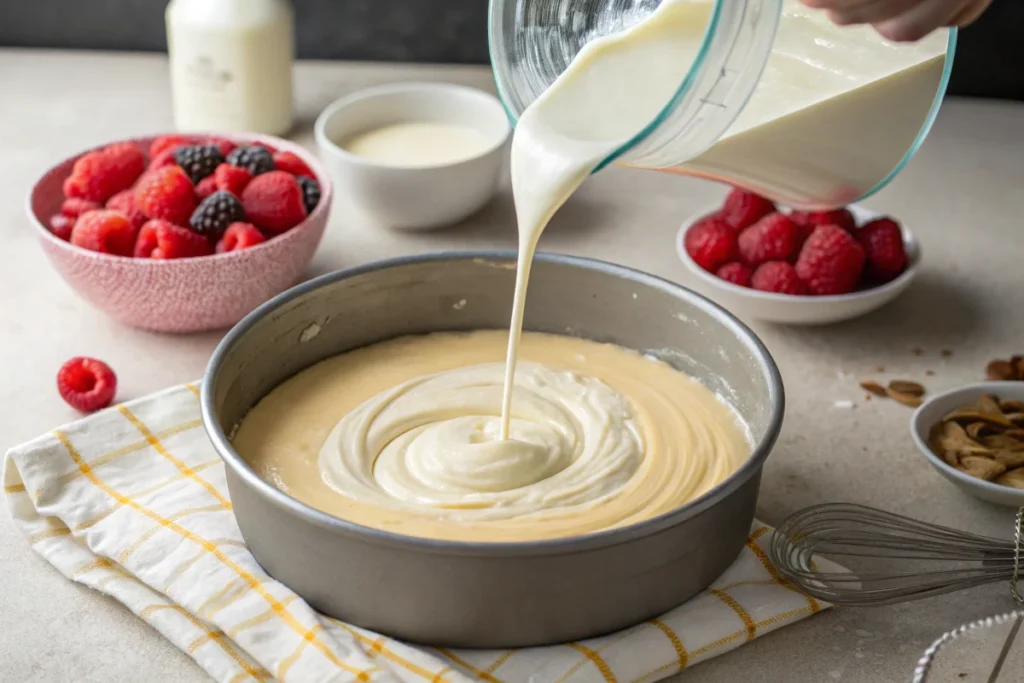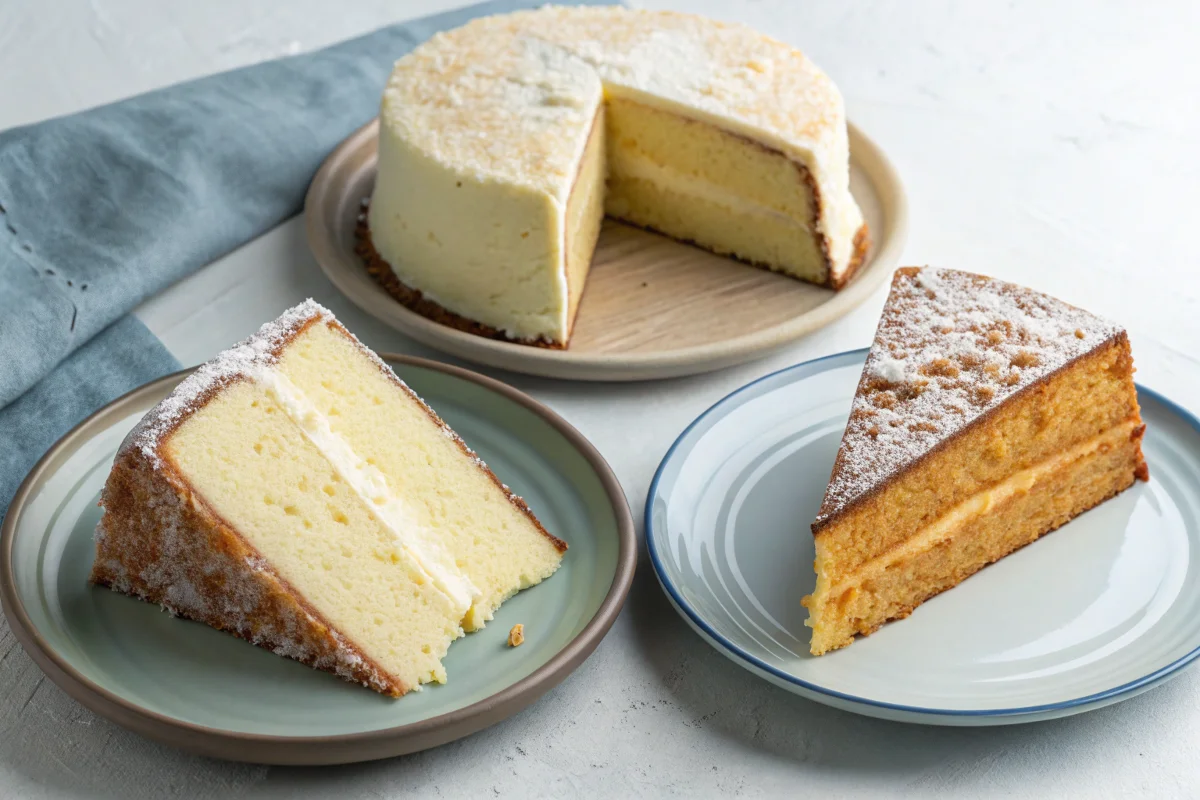This article explores using kefir instead of yogurt in cake recipes. Learn how this substitution impacts flavor and texture. Discover if it’s a naturally good option for your baking, and how you can integrate it into your everyday recipes. We aim to make you a confident baker, armed with the knowledge of using kefir.
Why Consider Kefir Naturally For Cakes?
Kefir, a tangy fermented milk drink, can add a unique twist to your cakes. Many bakers are curious about using kefir instead of yogurt in their recipes. Let’s explore the reasons for this substitution, and how kefir can benefit your baked goods. It’s a naturally appealing idea for those looking for a different flavor and for those seeking a more moist cake. This could be a game changer for your baking, and might elevate your cake recipes.
The Naturally Tangy Flavor of Kefir
Kefir’s tangy flavor comes from the fermentation process, a naturally occurring reaction between milk and bacteria. This adds a subtle sour note to cakes, creating a more complex taste profile. It is a different flavor profile than yogurt, offering a unique alternative for your cake recipes. This unique taste can make your cakes more interesting, and add a bit of sophistication. It adds a naturally delicious element that many bakers appreciate, and it will change the way you approach cake baking.
Naturally Using Kefir for Moist Cakes
Like yogurt, kefir adds moisture to baked goods, preventing them from drying out, and resulting in a more delicious cake. This makes cakes soft and tender, improving their overall texture and feel. Kefir’s moisture content keeps cakes fresh longer, helping you enjoy your baked goods for a few more days. This is a naturally beneficial property when baking, as it ensures that the cake will be soft and enjoyable even after a few days. It’s a crucial quality for a great cake.
Kefir’s Naturally Light Texture in Baking
Kefir helps create a light and airy texture in cakes, a crucial component of a good cake recipe. This is due to its acidity reacting with baking soda, creating carbon dioxide. The result is a fluffy cake with a delicate crumb, a naturally desired outcome. It naturally enhances the texture of your cakes, and it also elevates their appearance and feel. The texture is what sets it apart from other liquids, and it creates a more delicate cake.
Kefir vs. Yogurt: What Happens Naturally in Cakes?
Both kefir and yogurt are fermented dairy products, but they have some differences. Consequently, these differences affect how they behave in baking, so it’s important to know the specifics when baking a cake. Let’s see how these two compare, considering their textures, tastes, and reactions with other ingredients. Understanding this helps you make better baking decisions and to produce better cakes, especially when choosing the right liquid for your recipe.

The Naturally Different Consistencies of Kefir and Yogurt
Kefir is thinner than yogurt, which can affect your cake batter’s consistency and final results. Its liquid nature may make the batter slightly runnier, so it’s important to monitor and adjust other liquids in the recipe as needed. Paying close attention to batter consistency is key to ensuring your cake turns out perfectly. This naturally occurring difference requires small adjustments but can lead to great results when using kefir instead of yogurt.
How Acidity Naturally Differs Between Kefir and Yogurt
While both are acidic, kefir has a tangier flavor than yogurt due to its unique fermentation process. This higher acidity adds a pronounced sour note, which can impact the overall flavor of your cake. Kefir’s distinct tang is a key factor to consider when deciding between the two, especially for cake baking, as it can influence both taste and recipe outcomes.
How Naturally Similar are Kefir and Yogurt?
Despite their differences, kefir and yogurt have similar baking properties, which is why they can be used interchangeably in a cake recipe. Specifically, they both add moisture and help create a tender crumb, which is essential for a good cake. They can often be used interchangeably, offering a degree of flexibility in your baking, especially in cake recipes. They are both naturally good options for baking, making it easy for you to experiment and try new flavors for your cake. Both will help create delicious results, and that is why they are very useful in the kitchen when making cakes.
Naturally Substituting Kefir for Yogurt in Cake
Substituting kefir for yogurt in cakes is usually straightforward, but understanding what to expect can help you prepare. Slight adjustments may be needed to achieve the ideal texture and flavor, especially in cake baking. Let’s explore tips for a successful substitution to ensure the best outcome for your recipe. With these insights, you’ll become a more confident baker, capable of seamlessly using kefir in a variety of cake recipes.

A Simple 1:1 Substitution Naturally
In many recipes, kefir can replace yogurt at a 1:1 ratio, as both share similar properties in cake baking. For example, if a recipe calls for 1 cup of yogurt, simply use 1 cup of kefir. This easy substitution works well for most cakes, though slight adjustments may be needed based on your preferences or recipe requirements. It’s a great starting point for experimenting with kefir in place of yogurt to enhance your cake recipes.
When Adjustments Might Be Naturally Needed
If your batter is too thin, reduce other liquid ingredients like milk or water—this is especially important for cake baking. If the cake tastes too tangy, slightly reduce the kefir or add a bit more sugar, depending on your preference. These small adjustments will help you achieve perfect results tailored to your taste and recipe. Learning how to tweak recipes is a natural part of the baking process and an essential skill for creating the perfect cake.
The Naturally Great Results of Using Kefir
Using kefir in cakes delivers delicious results with a unique flavor that everyone will appreciate. It creates moist, tender cakes with a subtle tang that sets them apart, adding a distinctive note to your baking. As a natural alternative to yogurt, kefir enhances both the flavor and texture of your cakes, adding complexity and character to each bake.
Naturally Enhancing Flavor With Kefir in Cakes
Kefir enhances the flavor of cakes, adding a unique and appealing note to even basic recipes. Its versatility makes it a great addition to various baking creations, especially cakes. By combining kefir with different ingredients and spices, you can unlock new flavor possibilities and elevate your baking. It’s a naturally effective way to bring creativity and depth to your cake recipes.
How Kefir Naturally Complements Sweet Flavors
Kefir’s mild tang balances sweet flavors, preventing them from becoming overpowering, especially in cakes. It creates a more rounded, complex taste that works beautifully in recipes with berries, citrus, or chocolate, enhancing and adding depth to the flavor. Kefir’s acidity naturally elevates simple recipes, bringing new dimensions to your cakes and making them even more enjoyable and satisfying.
Pairing Naturally Tangy Kefir with Spices
Kefir also pairs well with spices such as cinnamon, nutmeg, and ginger, creating more complex flavor combinations in your cake. These spices complement its tangy flavor, and they enhance the overall taste of your baked goods, especially a cake. They also add warmth and depth to your cakes, a welcome addition to many cake recipes, and enhance its overall taste. This is naturally a great flavor pairing, creating a more sophisticated and memorable taste for your cake. They will also create a wonderful aroma in your kitchen, and a more enjoyable baking experience, especially when baking your cake.
Naturally Using Kefir in Different Cake Types
Kefir is great in many different types of cakes, making it a great ingredient for any type of baking. This includes pound cakes, sponge cakes, and layer cakes, where its unique flavor can shine and make your recipes stand out. Its moisture and tangy flavor work well in all, enhancing their taste and texture, especially in more complex cake recipes. This naturally makes it a very useful ingredient in different kinds of baking, and especially in different cake recipes. It’s very versatile, and it offers a different dimension to various kinds of cakes.
Naturally Achieving the Best Texture with Kefir
Texture is just as important as flavor in cakes, as both contribute to the overall eating experience. Kefir helps create a light, tender, and moist texture, which is key to a satisfying cake. Its natural properties improve the final results, enhancing the cake’s quality and appeal. Let’s explore how kefir achieves this and how you can use it to perfect your bakes.

Kefir’s Naturally Tenderizing Effect on Cakes
The acidity in kefir tenderizes the gluten in flour, breaking down proteins and softening the cake’s texture. This results in a softer, less dense cake that is far more enjoyable and prevents it from becoming tough or chewy. This tenderizing effect is crucial for achieving the perfect cake, making it pleasant to eat and enhancing its overall appeal. This is why using kefir instead of yogurt can be so beneficial in baking.
How Kefir Naturally Creates a Moist Cake
Kefir’s moisture content is a key benefit when baking with kefir, as it keeps cakes soft and prevents them from drying out. This is especially important for cakes meant to be moist, helping retain their texture and flavor for several days. By keeping cakes fresher for longer, baking with kefir enhances their overall quality and ensures they remain delicious and satisfying. This naturally valuable property makes kefir an excellent choice for achieving perfect results in cake baking.
Naturally Achieving Lightness with Kefir
The reaction between kefir and baking soda creates bubbles that make cakes light, fluffy, and voluminous—key for achieving the perfect texture. This natural process is essential in cake baking, providing a delicate, airy crumb that enhances the cake’s appeal and overall quality.
Naturally Adapting Recipes for Kefir
Sometimes recipes need minor adjustments when baking with kefir, as its consistency can differ from other liquids. This is especially important when baking a cake to achieve the perfect texture and flavor. Understanding these changes will help you get the best results and ensure your cake turns out soft and delicious. Let’s explore how to adapt your recipes for baking with kefir, a key skill that will make you more flexible and confident in the kitchen, particularly for cake recipes.
When Naturally to Reduce Other Liquids
If your recipe contains a lot of liquid ingredients, you may need to reduce them when baking with kefir instead of yogurt, as kefir is a liquid itself. This is especially important for cake baking to prevent a runny batter, which can impact the cake’s texture and final results. Adjust the liquids gradually and monitor the batter’s consistency—achieving the right consistency is essential when baking with kefir. This simple adjustment will enhance both the texture and flavor of your cake, making it moist and delicious.
Naturally Adjusting for the Tanginess of Kefir
If you find the tanginess of kefir is too strong in your cake, add a little sugar, or consider using a different type of sugar that will balance the flavor. This can balance out the sour flavor, and make it more suited to your preferences for your cake. Or, use less kefir, and compensate for it with other liquids, while maintaining the proper moisture of your cake. This is a naturally easy fix, and it will give you full control of the flavor, particularly for your cake. You should adjust to fit your individual preferences, so that your cake is perfect for you, and that is the goal of all good baking.
Other Naturally Helpful Baking Tips
When baking with kefir, use room-temperature ingredients for better mixing, as they blend more easily—this applies to all cake recipes. Avoid overmixing the batter, as it can lead to toughness and ruin the light texture you’re aiming for in your cake. Always preheat your oven to the correct temperature to ensure even baking and consistent results. These simple yet essential tips are especially helpful when baking with kefir, making a big difference in achieving perfect cakes with minimal effort.
Naturally Baking a Variety of Cakes with Kefir
Kefir is a versatile ingredient that adds a unique twist to any cake recipe, from simple bakes to more elaborate creations. It enhances texture, keeping cakes moist and delicious, while also elevating their overall flavor. Its versatility makes it perfect for experimenting with new recipes and unleashing creativity in the kitchen. Integrating kefir into your baking is a naturally great way to explore fresh ideas and improve your cake-making skills.
Naturally Using Kefir in Simple Cakes
Kefir works wonderfully in simple cakes, adding moisture and enhancing their overall flavor. Vanilla, chocolate, and spice cakes, in particular, benefit from its properties, creating a more complex and appealing taste profile. It’s a naturally simple way to elevate basic recipes and add a new dimension to your cake baking. These recipes are perfect for beginners and serve as a strong foundation for exploring more complex cake creations.
Enhancing Layer Cakes Naturally with Kefir
Kefir adds a delightful tang and moisture to layer cakes, enhancing both their texture and flavor. It keeps the layers soft, tender, and fresh for longer—an especially valuable benefit for layer cakes. Try using kefir in your favorite recipe and experience the difference it makes. This simple substitution improves the overall quality of your cakes, adding a unique flavor note and making them even more enjoyable.
Naturally Baking Bundt Cakes with Kefir
Kefir works wonderfully in bundt cakes, creating a moist, tender texture while enhancing their overall flavor. It keeps the cake fresh longer, preventing it from drying out—a common challenge with bundt cakes. The tangy flavor complements the dense texture, adding complexity and making the cake more enjoyable. Using kefir in your recipe is a naturally great choice, delivering a delicious, satisfying result and an improved baking experience.
Conclusion: Naturally Choosing Kefir for Cake
Using kefir instead of yogurt in cake is a naturally good choice that adds a unique twist to your baking. Kefir enhances cake recipes by providing moisture, a slight tang, and a tender texture, making baked goods more delicious and enjoyable. This simple substitution works well for bakers of all levels and can be integrated into almost any cake recipe. By using kefir, you’ll elevate both the flavor and texture of your cakes, creating consistently impressive results. Don’t hesitate to experiment—this versatile ingredient can transform your baking and help you become a more creative and adaptable baker. For more tips and ideas, check out our guide on baking with kefir.
Frequently Asked Questions (FAQs)
Can you use kefir instead of yogurt in baking?
Yes, you can use kefir instead of yogurt in baking. Kefir adds moisture and a tangy flavor, making it a suitable substitute in most recipes, and especially cake recipes. It often works in a 1:1 ratio, although slight adjustments may be needed to reach the perfect texture and taste, especially when baking a cake.
Can kefir be used in baking?
Yes, kefir is great for baking. It adds moisture, creates a light texture, and contributes a tangy flavor. It works well in various baked goods, including cakes, muffins, and breads, making it a versatile ingredient. Kefir is a very versatile ingredient that can enhance many different types of recipes, and especially different cake recipes.
Does kefir curdle when heated?
Kefir can curdle when heated at high temperatures. However, this is not usually a problem in baking, as temperatures don’t usually get high enough to cause a significant impact, and especially when baking a cake. The curdling can sometimes make it even more tender, contributing to the overall texture of your baked goods, and also that of your cake.
What can I replace yogurt with in cake recipe?
You can replace yogurt with kefir, sour cream, buttermilk, or applesauce, all of which will contribute to moisture and texture when baking a cake. These are good substitutes that provide moisture and texture, though their flavor will be different, and that’s a consideration for your cake. The best one for you will depend on the recipe and also your personal preferences for your cake.


3 thoughts on “Kefir Instead of Yogurt : A Naturally Good Choice?”